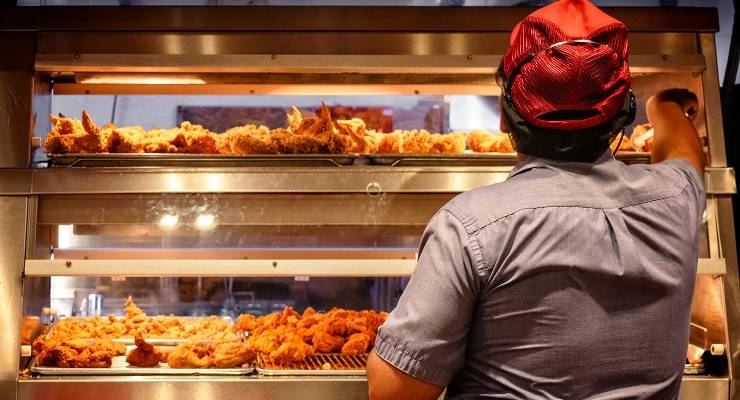
Occupational health and safety isn’t the sexiest topic. We all know that it’s important, and that failures can have tragic consequences, but columnists and the Twitterati have rarely stoked the culture wars with hot takes on ergonomics and fire drills.
But this once-beige subject is now becoming a thorny battlefield for the biggest movements and debates of our time.
While COVID-19 and the climate change-fuelled bushfires have reminded us of the importance of protecting workers’ physical health from external threats, the Me Too and Black Lives Matter movements are also expanding outdated definitions of “safety” to protect the minds and bodies of women and people of colour.
Despite the pandemic raising public appreciation for various essential workers, our broken industrial relation system is likely to suppress efforts to increase wages to match social value. But now, focus is shifting to conditions, an area where workers, unions and lawyers are notching up more wins — and unscrupulous bosses should be nervous.
Plagues, disasters and violence don’t stop when work starts
The pandemic has forced many businesses to rapidly prioritise onsite health and safety measures, if only to avoid becoming unfrequented petri dishes. McDonald’s, for instance, has suffered a series of temporary shutdowns in Australia and the US after workers contracted the virus, leading to negative press coverage and some commentators questioning whether their policies adequately support staff.
The summer bushfires likewise raised safety concerns. As cities were blanketed in smoke, multiple unions including the powerful Australian Workers Union told their members on outdoor sites that conditions were too hazardous to work in. Even after the pandemic clears, rising global temperatures are set to further destabilise the environment in which many of us work, setting the stage for further contestation.
But hazards on worksites, as traditionally defined, aren’t the only ones for which employers stand potentially liable. Lockdowns have worsened the potential for domestic violence in many households.
While this might once have been considered a “private” matter, work-from-home policies have brought many private spaces into the “workplace” and thus the realm of corporate responsibility. A recent NSW Supreme Court ruling found that employers can be held responsible for family violence when staff work from home.
Businesses must take reasonable steps to ensure their workers are safe while performing their duties, but many transitioned to remote working without asking women whether it was safe for them to do so. The Australian Human Resources Institute suggests employers now update their work-from-home checklists and provide avenues for staff to safely disclose risks.
Personal safety is political
The Me Too movement has provided yet another welcome expansion of the definition of safety in the workplace. Where once safety training emphasised problems associated with traditionally masculine roles and activities, such as men injuring themselves lifting boxes or falling off ladders, the greatest threat to women in the workplace has often been predatory men.
Last week saw more high profile allegations of predatory behaviour, as former esteemed judge Dyson Heydon was accused of sexual harassment by multiple women.
Julia Baird framed this issue firmly within the female employee’s right to bodily safety. “If a woman cannot be safe in the highest court in the land, a place of probity, integrity and rectitude, then where can she be?”, she wrote. Courts around Australia are urgently reviewing how they handle sexual harassment.
Similarly, organisations are being challenged to ensure their corporate culture does not compromise the wellbeing of people of colour. Former Collingwood AFL player Heritier Lumumba wrote in The Guardian on Friday that the club breached his right to “workplace safety” and the “safety of Black players” by allowing a culture of racism to fester and by ostracising those who spoke up.
From safe spaces to safe societies
The application of the term “workplace safety” to non-physical threats is welcome but controversial. Conservatives often depict such claims as therapeutic calls for “safe spaces”, and downplay the real harms caused by verbal abuse. Even progressives can find legitimate downsides to focusing on personal grievances at the expense of collective solidarity.
But as Lumumba wrote: “I don’t see this as: ‘poor me, I feel sorry for myself’. This is about something much greater, something that affects so many unfortunate Australians out there.”
Since threats to our safety are so often effects of broader injustices, such as climate change, sexism or racism, addressing them can offer a means to change institutions for the better. The language of safety simply makes the wealthy and powerful take notice, lest they be held responsible for the risks.








Crikey is committed to hosting lively discussions. Help us keep the conversation useful, interesting and welcoming. We aim to publish comments quickly in the interest of promoting robust conversation, but we’re a small team and we deploy filters to protect against legal risk. Occasionally your comment may be held up while we review, but we’re working as fast as we can to keep the conversation rolling.
The Crikey comment section is members-only content. Please subscribe to leave a comment.
The Crikey comment section is members-only content. Please login to leave a comment.